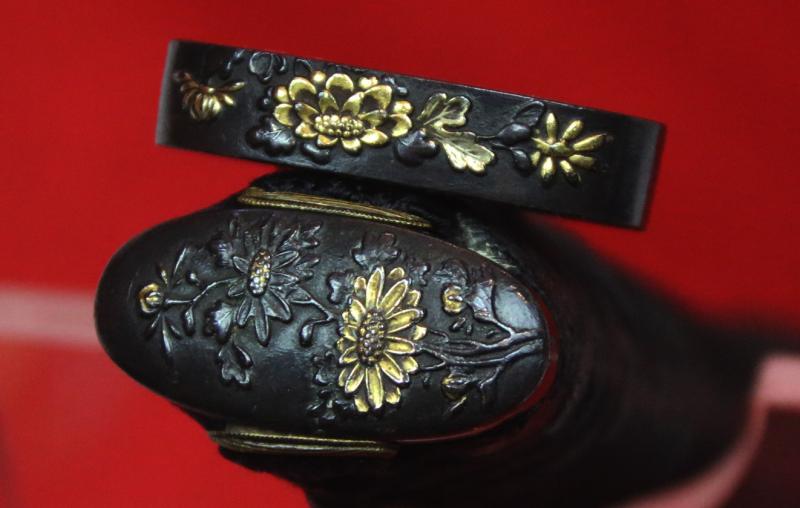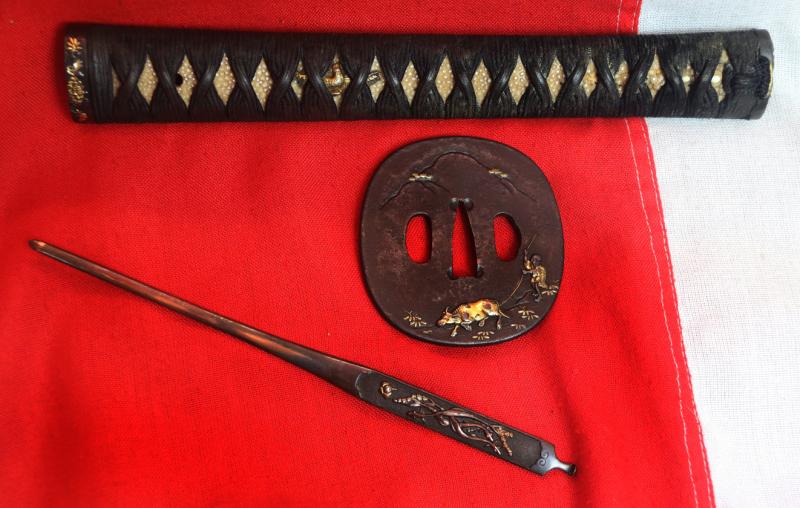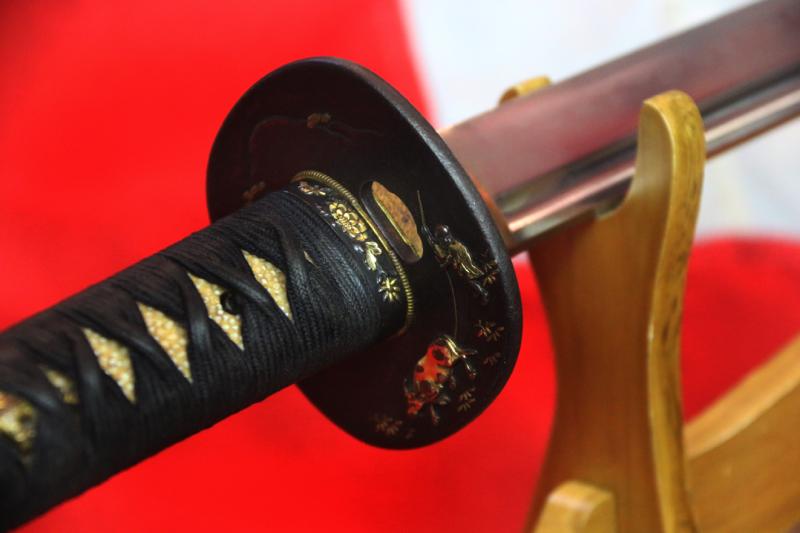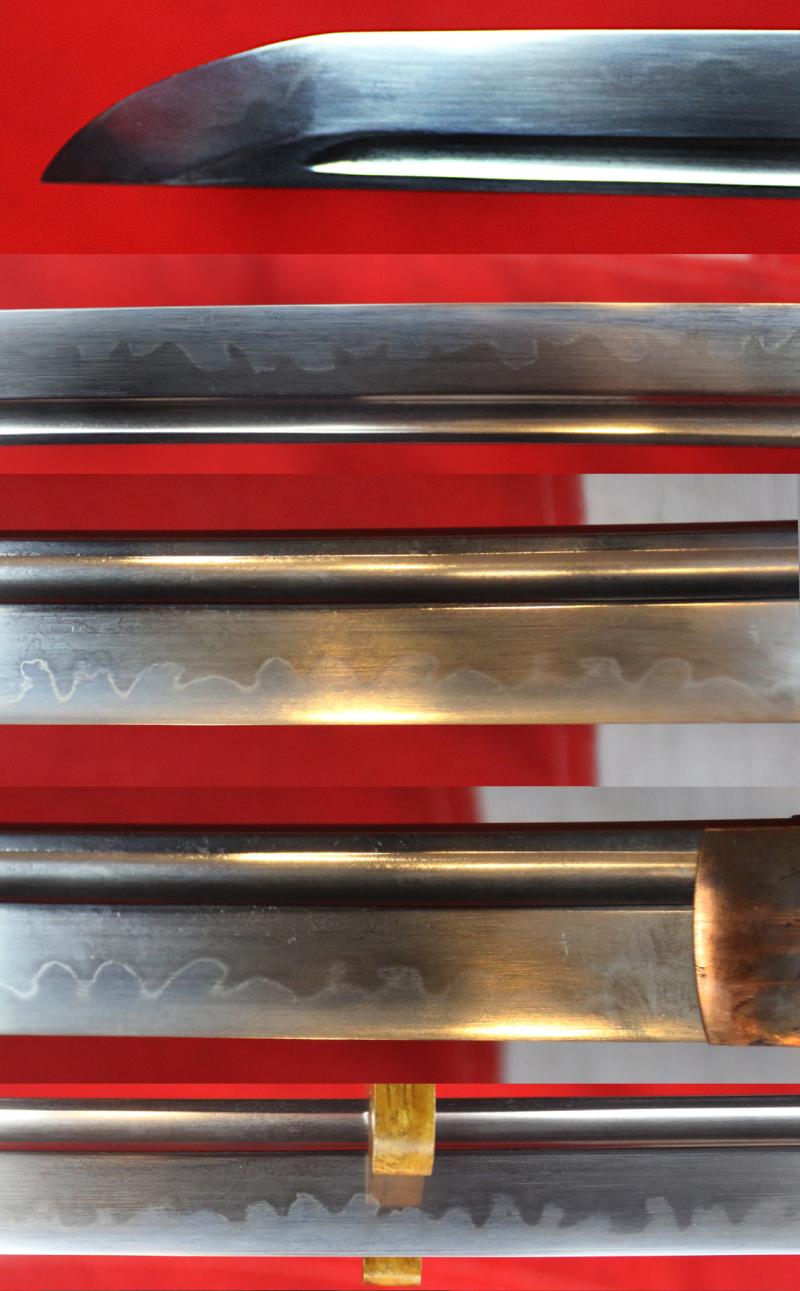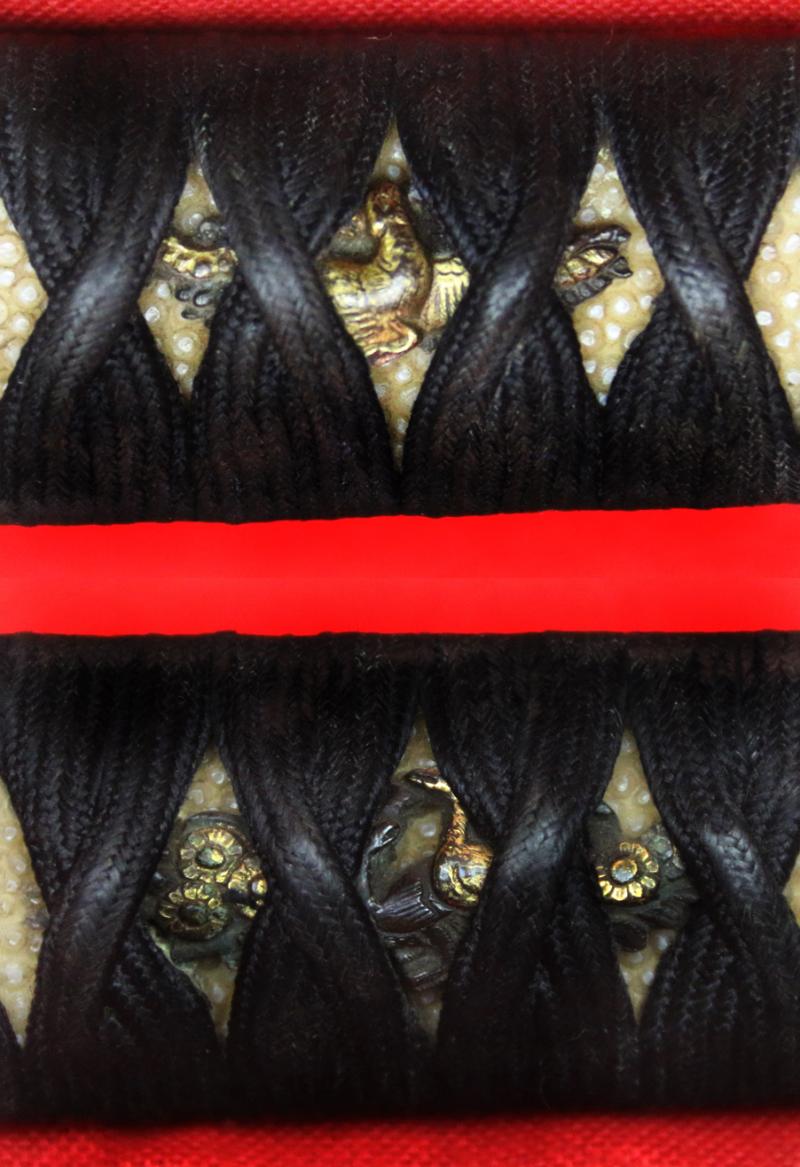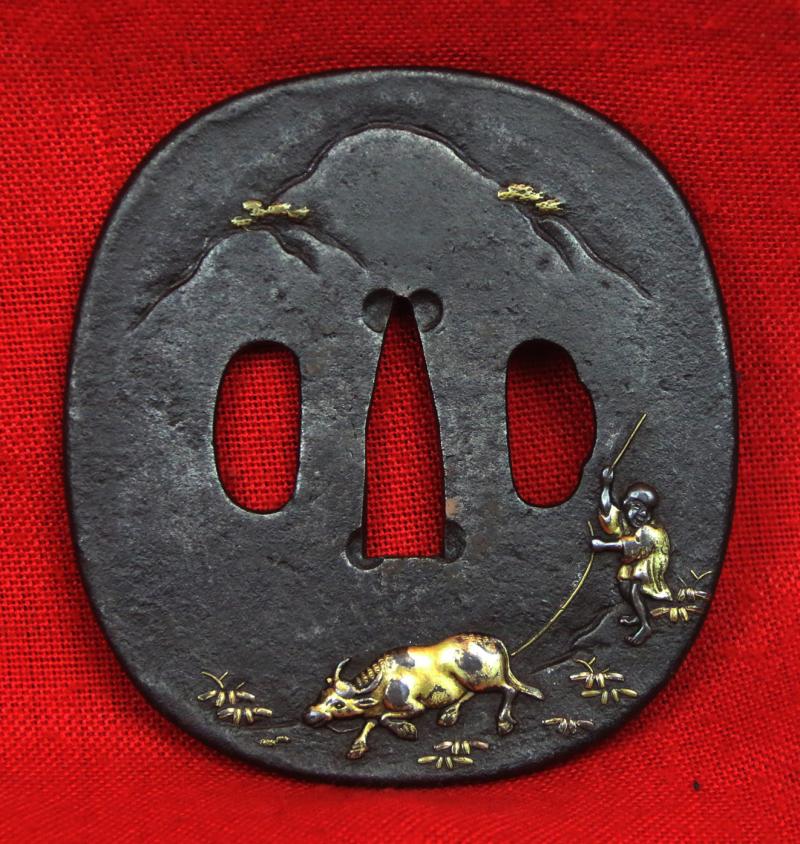A Beautiful Antique Edo Samurai Long Katana. A Most Fine Katana With A Good Hon-Zukuri Blade With Midare Hamon and Full Length Hi
Soten school mounts on a botanical theme, in gold and shakudo, a taka zogan tsuba decorated with a peasant driving a bullock with a mountain in the background. Mumei tang. Very nice blade indeed, hon-zukuri with wonderful hamon in midare form. The stunning menuki, bound under the original Edo micro cord tsuka-ito of birds, are also in gold and shakudo.
This is a katana made for a ranking samurai based on horseback in combat, a medium weight and cursive katana, a battle sword, yet with beautiful fittings and features, and made to complete an uncomprimising task of close combat and aggressive swordmanship.
Although samurai would not, one would say, be a cavalry based warrior, all senior samurai would be mounted and thus travel on horseback, and some cavalry type samurai could be deployed in battle, but with differing combat styles depending on what part of Japan they came from. The cavalry troops, being Samurai, had personal retainers that stayed closer to them in the Sonae, carried their weaponry and worked as support units, much like an European squire. They also joined the fight whenever possible (especially in the mounted infantry scenario) and were often responsible of taking heads for their lords.
These foot Samurai were also used as heavy infantry or archers to support the ashigaru lines.
Tactics
Given the fact that the Samurai could directly dismount and operate as infantry, there were some specific tactics for horsemen.
Cavalry in general was only used after the battle was already started, either to deliver a decisive victory or to trying to save the day.
Norikiri
This is a classic charge, where several small groups of five to ten horseman ride consequently (possibly with a wedge formation) into a small area against the enemy lines, to maximize the shock. It was mainly used by heavy cavalry in the East, but given the fact that the ideal target where "weavering" units with low morale or disorganized, even medium cavalry could perform this charge.
The main role of this charge was to create confusion; if it didn't succeed, the cavalry regroups and either retreat or deliver another charge.
Norikuzushi
This is a combined infantry and cavalry charge. The horseman charged first, and after creating mayhem, a second charge is delivered by infantries armed with polearms, which could keep on fighting. The main target for this tactics were ranged units detached by the army. After a Norikuzushi usually follows a Norikiri by the cavalry group. 30 inch blade tsuba to tip. The saya has two colour lacquer in red and black.
Every single item from The Lanes Armoury, Britain's famous, favourite, and oldest original Armoury Antique store, is accompanied by our unique Certificate of Authenticity. Part of our continued dedication to maintain the standards forged by us over the past 100 years of our family’s trading, and thus, it is a lifetime guarantee.
Code: 25300
6850.00 GBP




